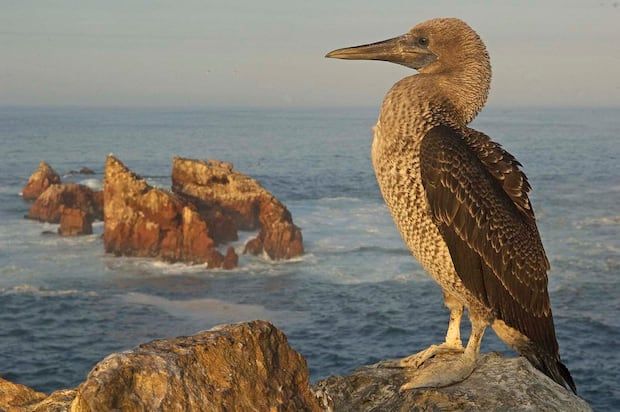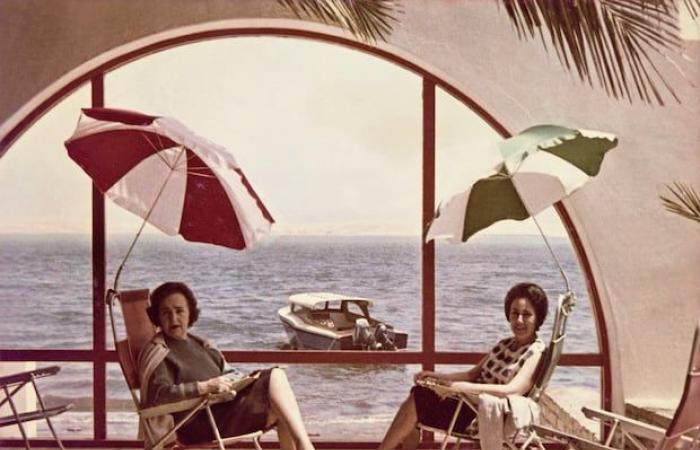Read too | From Villa El Salvador to MIT: how a Peruvian teenager reached the world academic top
The writer Josefina Barrón knows this ecosystem quite well. “In the summer, he spent the three months in Ancón, but winter was just winning, we were going to spend on weekends to Paracas,” says the author. From an early age, he discovered that this enigmatic bay has two personalities. “In the morning, it is peaceful, sunny, warm. But in the afternoons, the winds are very very fortunate and the tide grows, generating a totally different sensation, as if you were in another dimension,” he explains.
The first Lima families arrived in Paracas at the beginning of the 20th century. From the 50s it becomes a summer place. On the left: Carmen Valle Riestra by Alvarez Calderón. (Photo: Ferreyros Archive Álvarez Calderón)
From that time, an image that always evokes is that of his parents arriving home in their motorcycle costumes, full of mud and sand, after climbing and going down the sinuous curves of El Cursed, a small hill within the National Reserve of Paracas. “I have my mother in memory taking me for a walk in the desert. I was Chiquitita, four or five years old, in the motorcycle tank, between the helm and she. It was a kawasaki, if I’m not mistaken. We both went well grabbed of the helm,” says Josefina.

A common piquero. In the background, the islets that are located at the northwest end of the Ballestas Islands, in Paracas. (Photo: Walter Wust)
Together with his cousins and brothers he played in search of the treasure, literally. “We as boys went for a walk on the shore and put ourselves to the reserve. We started digging holes in the sand and we found pieces of ceramics of the Paracas culture, or remains of fossilized snails. He won who found more things or who found different things,” he says.

Young Lima in the 70s, observing the cliffs of the Paracas Reserve, a fundamental part of their varied geography. (Photo: Ann Clark of Peschiera)
Today, it is those memories that have led her to rebuild the history of Paracas: from her most original origins to becoming that charming port, composed of a geography full of contrasts. “Paracas for me is a separate world, because you arrive and automatically disconnect from everything. It is a time to reflect, it is a time to look at nature, for contemplation, because every minute of the day there is a different color in the sand, in the dunes, in heaven, in the sea. Everything changes.”
Where the wind is born
This 2025 is a special year for Paracas for two reasons. The first is because 50 years of the creation of the Paracas National Reserve, which houses species such as the Humboldt penguin, the sea lion and thousands of migratory birds, making it a key refuge for the biodiversity of the Peruvian coast, are completed. The second: the 100 years of the discovery of the Paracas culture, a fact that announced to the world the textile tradition and the surgical techniques that were used in this area of pre -Columbian Peru.

Aerial view of the Outma Salar, an extensive saline area located within the Paracas National Reserve. (Photo: Evelyn Merino Reyna)/ evelyn merino r
In this unique context, Josefina Barrón has prepared an investigation that is entitled “The human geography of Paracas”. “I’m going to put myself in the skin of those who have lived in different stages in Paracas,” says Josefina. “Begin from the prehistoric era, when the Cordillera de la Costa sinks from Illescas to Nasca in a cataclysm 18 thousand or 20 thousand years ago, which results in this peninsula. Therefore, this area is full of fossil remains, whales and other species that inhabited this place thousands of years ago and that science is making known,” he complements.

Mummy of the Paracas culture found in the Museum of Archeology and Anthropological of Peru, in Pueblo Libre. (Photo: Lorry Sacedo)
The trip continues with the first men who arrived in this area of Peru from other continents, until they reached the pre -Columbian era, when the Paracas culture is formed. He continues with his fall in the Inca era until he reaches the conquest. From then on, a temporary vacuum takes us to the day Julio C. Tello discovered this early civilization of ancient Peru a hundred years ago. “This area was practically inaccessible. At the time of the colony, people reached the back of Mula. Many of the first expeditionists were lost in the desert,” says Josefina.

Josefina Barrón is a writer and editor. He published “Juggings in Taco Aguja”, “Tinkuy, the Earth makes man”, “Nikkei is Peru”, among other books./ Morfi_jimenez
At the beginning of the 20th century, new travelers arrived: they were not fishermen or nomads, but Lima families who, in search of new air and new horizons, found in this coast a refuge of freedom. It was in these first decades that the modern history of Paracas began to trace with firmer lines. The creation of the Guano administrator company, towards the middle of the century, marked one of the great changes: the desert and its islands, before only witnesses of migratory birds and sea lions, became the scene of an incessant economic activity.
“We have been able to talk with lifelong Paraqueñas families. One of them is the Bellido family, which was part of this small society of, quotes, adventurers. The matriarch was born on the second floor of the old train station. I have been able to talk with her and remains quite lucid, despite being 103 years old. It is the last paraqueña that survives of that time,” Josefina tells us. We can find these fascinating stories in a large format publication and with full color images that, according to the Lima author, hopes to present before the last quarter of the year. //
Three key moments
• The Guano Administrative Company was founded in Paracas in 1909 with the aim of managing and selling the Guano of the Islands.
• The Paracas culture was discovered in 1925 by the Peruvian archaeologist Julio César Tello Rojas, helped by his disciple Toribio Mejía Xesspe.
• The Paracas National Reserve was created on September 25, 1975, in order to preserve coastal marine ecosystems and its biological diversity.












